The Fortifications of Vauban at Saint-Vaast-la-Hougue and Tatihou, the Vauban Towers: During the Battle of La Hougue in 1692, twelve ships of King Louis XIV were defeated by the Anglo-Dutch fleet. Following this defeat, two fortified towers were built to protect the coast of the Cotentin Peninsula, the Port of Saint-Vaast-la-Hougue and the island of Tatihou. The towers were constructed by Benjamin de Combe under the supervision of the the famous military architect Sébastien Le Prestre de Vauban, the chief engineer of King Louis XIV, the Sun King, the most famous king of France. The fortified towers were built to be self-sufficient. Both the towers are 21 metres high, they are known as the Vauban Towers. Apart from a short English attack foiled by the crossfires from the towers, the Vauban Towers have never been used in a battle. During WWII, severel bunkers were built by the Germans around the towers and inside Fort de la Hougue, the towers were used as observation posts. The strategic location of the towers provided good views over the sea and Utah Beach and the other landing beaches on the Normandy coast. Just before the Allied Forces landed on the beaches of Normandy, the Germans left Saint-Vaast-la-Hougue and Tatihou. The Vauban Tower on the island of Tatihou was built in 1694. The Tatihou Tower is surrounded by a botanical garden, a fortified farm, barracks and a chapel. Inside the tower is a maritime museum. The island of Tatihou is situated just opposite Saint-Vaast-la-Hougue. The Hougue Tower is situated inside the walls of Fort de la Hougue and can only be visited during the summer months. The Fort de la Hougue is under militairy ownership, the signal station inside the fortress remains a national French Marine property and is not open to the public. The tower on the island of Tatihou and the Hougue Tower are knownn as the Vauban Towers. The Vauban Towers are part of the UNESCO World Heritage Site: Fortifications of Vauban. The Fortifications of Vauban gained the status as a UNESCO World Heritage in 2008.
www.werelderfgoedfotos.nl © Copyright World Heritage Photos
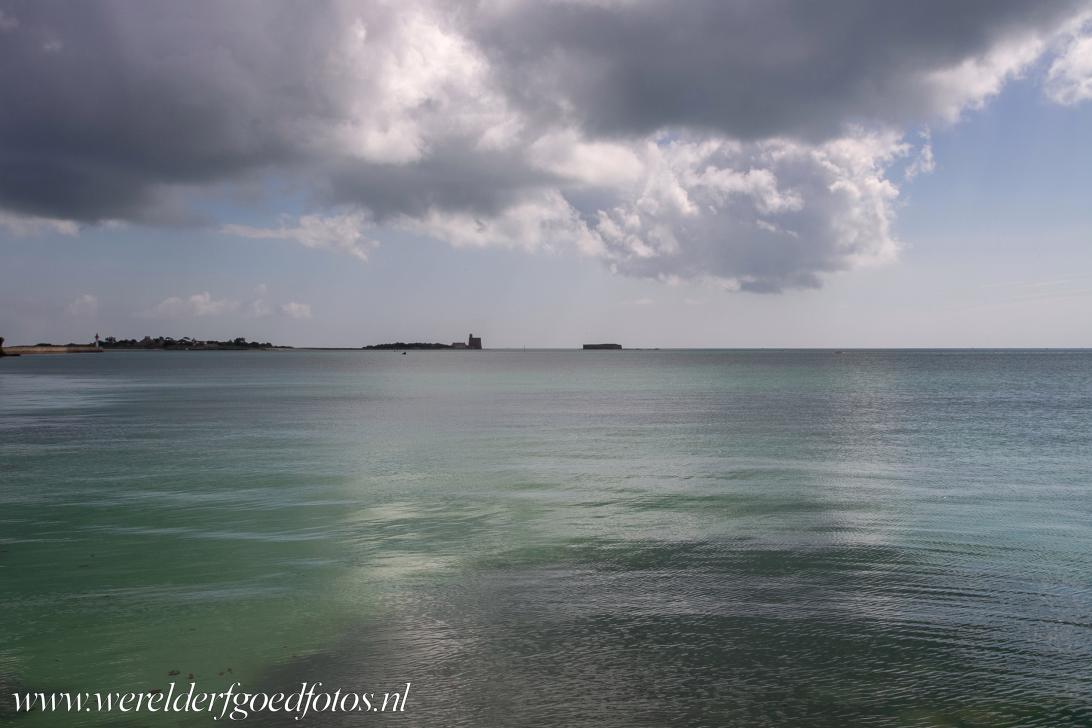
The Fortifications of Vauban at Saint-Vaast-la-Hougue and Tatihou were built after the Battle of La Hougue in 1692. The Vauban Tower on the small island of Tatihou was built in 1694, the tower has three levels, there was a platform for ten cannons and an ammunition store, inside the adjacent farm were several barracks to accommodate about 80 men and there was also a chapel. The island of Tatihou is situated in the Bay of Saint-Vaast-la-Hougue.

The Fortifications of Vauban at Saint-Vaast-la-Hougue and Tatihou were built after the Battle of La Hougue in 1692. The Vauban Tower on the small island of Tatihou was built in 1694, the tower has three levels, there was a platform for ten cannons and an ammunition store, inside the adjacent farm were several barracks to accommodate about 80 men and there was also a chapel. The island of Tatihou is situated in the Bay of Saint-Vaast-la-Hougue.
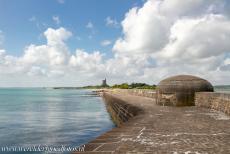
Saint-Vaast-la-Hougue and Tatihou, the Vauban Towers: The Hougue Tower is linked to the Port of Saint-Vaast-la-Hougue by a massieve dam. In WWII, during the occupation by the Nazis, two German pillboxes were built on the dam, the pillboxes were part of the Atlantic Wall. On 21 Juni 1944, Saint-Vaast-la-Hougue was the first English Channel port to be liberated by the Allies, for a few weeks the port was used by the Allied Forces until the Port of Cherbourg was liberated.
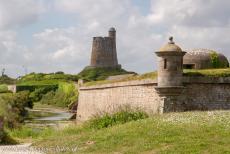
Fortifications of Vauban: The Hougue Tower and the Hougue Fort in Saint-Vaast-la-Hougue. The Hougue Tower had many different functions, such as observation, protecting the harbour and communication by signals. The Hougue Tower has three levels, accessible by a spiral staircase. The platform at the top consists of a artillery platform. During WWII, German bunkers were built inside the fort, on the right hand side, the dome of a German bunker.
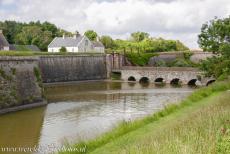
Fortifications of Vauban at Saint-Vaast-la-Hougue and Tatihou, the Vauban Towers: Le Pont Dormant (sleeping bridge) across the moat of Fort de la Hougue. Sleeping bridges were used in case of an attack by the enemy. The defenders of the fort just had to lift up the bridge deck and lowered it into the moat, in times of peace, the bridge deck remained in its place. Behind the centuries-old wall of the fort, the buildings of a modern signal station.
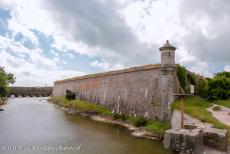
Saint-Vaast-la-Hougue and Tatihou, the Vauban Towers: Through a sluice gate, the moat around Fort de la Hougue was filled with seawater. Apart from an English attack foiled by the French crossfires from the Vauban Towers, the towers have never been used in a battle. During tWWII, the centuries-old Vauban Towers of Saint-Vaast-la-Hougue and Tatihou were integrated into the Atlantic Wall and used by the Germans as observation towers.
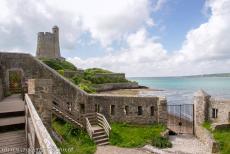
Fort de la Houguet and the Hougue Tower at Saint-Vaast-la-Hougue. The site around the tower is open to the public a few days each summer. You can also see the constructions built by the Germans during WWII inside the fort and climb the spiral staircase inside the tower for a nice view over the surrounding area. Inside the walls of Fort de la Hougue is modern signal station, the signal station is a national French Navy property and not open to the public.
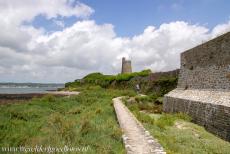
Fortifications of Vauban at Saint-Vaast-la-Hougue and Tatihou, the Vauban Towers: The Hougue Tower is 21 metres high. The crossfire from the batteries of the fortresses and the towers ensured the safety of the port and bay of Saint-Vaast-la-Hougue. Just like its twin tower on the island of Tatihou, the Hougue Tower is listed as a UNESCO World Heritage.
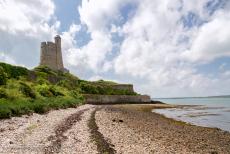
Saint-Vaast-la-Hougue and Tatihou, the Vauban Towers: The Hougue Tower the Fort de la Hougue were built in the period 1694-1699. The Hougue Tower is surrounded by a defensive enclosure, ramparts, bastions and a powder magazine. The Hougue Tower and its twin tower on the island of Tatihou are overlooking the sea, the Cotentin Peninsula and the Normandy Coast.
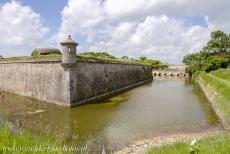
Fortifications of Vauban at Saint-Vaast-la-Hougue and Tatihou, the Vauban Watch Towers: Fort de la Hogue Fort is surrounded by a moat and the sea. The defensive walls are about 8 metres high. The fortifications and watch towers were built to be self-sufficient, with cisterns and magazines, to enable between 40 and 80 men to withstand a siege. On the left hand side of the turret, a German bunker, built inside the fort during WWII.
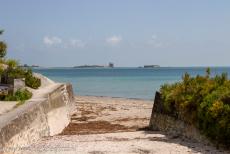
Fortifications of Vauban: After the Battle of La Hougue in 1692, a fortress and a fortified tower were built on the island of Tatihou. The Tatihou Tower, also known as the Vauban Tower, was built in 1694. Tatihou is a small island just opposite the Port of Saint-Vaast-la-Hougue, a fishing village on the east coast of the Cotentin Peninsula. The Maritime Museum on Tatihou houses a collection of pieces from ship wrecks of the royal fleet, sunk during the Battle of La Hougue.
